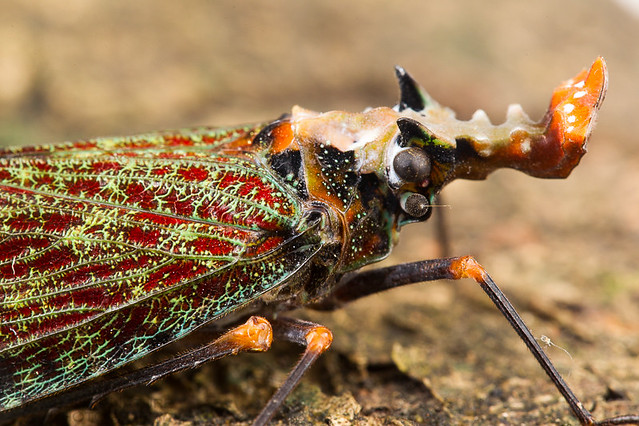

This feeding by sometimes thousands of SLF stresses plants, making them vulnerable to disease and attacks from other insects. Adults and nymphs use their sucking mouthparts to feed on the sap of more than 70 plant species. SLF pose a significant threat to New York's agricultural and forest health. They are smooth and brownish-gray with a shiny, waxy coating when first laid. In the fall, adults lay 1-inch-long egg masses on nearly anything from tree trunks and rocks to vehicles and firewood. The lower portions of their hindwings are red with black spots and the upper portions are dark with a white stripe. Their forewings are grayish with black spots. Red nymphs can be seen from July until September.Īdults begin to appear in July and are approximately 1 inch long and ½ inch wide at rest, with eye-catching wings. The black nymphs can be seen as early as April and until July. Nymphs are black with white spots and turn red before transitioning into adults.

Including SLF fact sheet, SLF look-alikes poster, and important links.Visit Cornell's Integrated Pest Management site for an up-to-date map of current infestation locations in the Northeast, including New York (leaves DEC website). The first New York State infestation was discovered in Staten Island in August 2020 (leaves DEC website). In the US, SLF was first discovered in Pennsylvania in 2014 and has since been found in New Jersey, Delaware, Maryland, Virginia, and New York. This insect could impact New York's forests as well as the agricultural and tourism industries. Spotted lanternfly (SLF) is an invasive pest from Asia that primarily feeds on tree of heaven ( Ailanthus altissima) but can also feed on a wide variety of plants such as grapevine, hops, maple, walnut, fruit trees and others. This means you will still see lanternfly nymphs and adults next year.Spotted lanternfly, Photo: Lawrence Barringer, Other egg masses may be well-hidden from view. Note: some egg masses high up in a tree will be unreachable.
#Red lantern bugs how to
View a Penn State Extension video on how to kill the eggs. Photo: Nancy Bosold, Penn State Extension. Scrape egg masses into a bag filled with some alcohol or sanitizer. Take the bag, place it in another bag, and discard it.The eggs must remain in the alcohol solution. Make sure the eggs come in contact with the alcohol/sanitizer.Scrape the eggs off the surface with a credit card, putty knife, or butter knife into the bag.Fill a plastic baggie with a few ounces of rubbing alcohol or hand sanitizer.You may see liquid released as the eggs underneath burst.Ĭrush lanternfly egg masses with a credit card or other flat item. Crush the eggs by dragging a credit card, putty knife, or another hard implement across the egg mass.

Once you’ve found lanternfly egg masses, destroying them is easy! Option 1: Crushing Photos: Emelie Swackhamer, Penn State Extension. Lanternflies lay eggs in areas protected from wind and harsh winters, such as:Įgg masses on a bench post (left) and close-up (right). You can find spotted lanternfly egg masses from September to June.Photo: Emelie Swackhamer, Penn State Extension. When dried, the egg masses they look like light grayish splotches of mud, cement, or lichen.The female secretes a white, waxy substance over the eggs to protect the mass.The masses are typically an inch long by 3/4 of an inch wide.Identify and destroy spotted lanternfly eggs WHAT TO LOOK FOR This is your chance to help limit next year’s lanternfly population! Check out our guidance below to learn: Starting in October, lanternflies lay their eggs. Learn how to identify the lanternfly and what they’re such a threat. The lanternfly is harmful to many important plants and trees. The spotted lanternfly is an invasive insect that first appeared in our area in 2014.


 0 kommentar(er)
0 kommentar(er)
